The Burrow Master
Posted on in In the Field by Zoey Greenberg, Science-Education Outreach Coordinator Hawk Mountain Sanctuary
“While owls are inherently fascinating, burrowing owls take it to another level."
— David H. Johnson, Director of the Global Owl Project
Conjure up the image of an owl with a furrowed brow, kicking soil out behind him as he digs in the dirt. He stops periodically to check for danger, excavating a burrow deep, complex, and big enough to host a mate and their future offspring. While it sounds like something out of a cartoon, these creatures do, in fact, exist. Did I mention that they decorate the outside of their burrow with firecracker wrappers and coyote scat?
Well, they do.
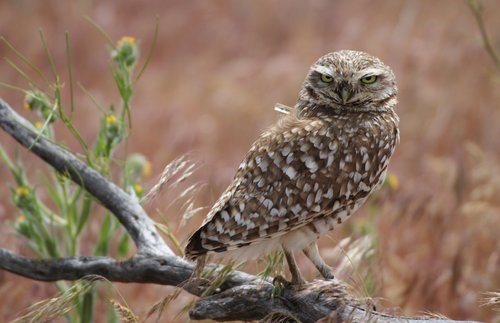
Burrowing owls, Athene cunicularia, are a small owl whose historic range includes most of the grassland, prairie and desert ecosystems of North and South America, and some of the Caribbean Islands. Burrowing owls in most of the United States re-use burrows made by prairie dogs, ground squirrels and badgers rather than digging their own, providing an intriguing and unique example of a bird species benefiting heavily from the presence of a mammalian neighbor. One of the smallest North American owls, the prevalence of these charismatic birds has drastically decreased with a decline in suitable habitat and fossorial mammals.
While many formerly suitable prairies are losing owls, there is one magical place near Hermiston Oregon where burrowing owls have a success story to tell. This is largely due to David H. Johnson, or DJ,” as he is fondly called by his dedicated volunteers. David donates fourth months out of his year fighting to maintain a productive breeding ground for burrowing owls (he truly does protect owls night and day. His schedule is very similar to the species he loves). I was lucky enough to visit his site this past Spring, and the experience was nothing short of riveting.
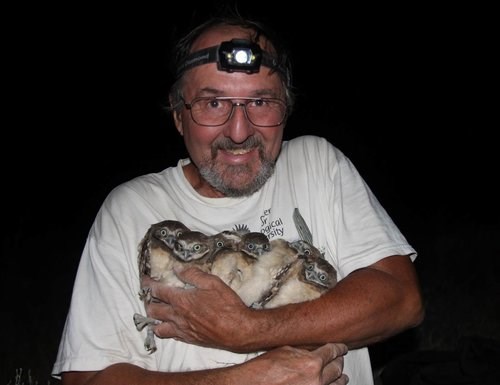
The Umatilla Army Depot where David has set up “owl shop” covers 17,000 acres of land. Burrowing owls are natural residents here, however a complex sequence of events beginning in the 1950’s led to the eventual extirpation of a critical burrow excavator upon which the owls rely; the badger. In a nutshell, Pronghorns were introduced to the Depot, but their population soon crashed. Coyotes were blamed even though the true cause was likely inbreeding, and indirectly through a coyote control program, badgers were eradicated. Without badgers to dig burrows, the owls began to suffer from a lack of critical nesting sites. Don Gillis, the Environmental Manager for the Depot at the time reached out for help resulting in the inclusion of David, a known “owl guy.” A team was born, and in July 2008, the first artificial burrows were installed on the Depot. In spring 2008, only 3 or 4 pairs of owls were left on the Depot; in 2009 there were 9 pairs; in 2010 there were 32 pairs. Now, there are between 45 and 55 pairs breeding every year. There is no doubt that without the implementation of this program, burrowing owls would no longer be present on the Depot.
In addition to enabling the local population to prosper, the project has paved the way for unique research opportunities. David has been coordinating the investigation of over ten research questions, including topics such as mate selection, juvenile dispersal, migratory behavior, the relationship between male vocalizations and family lineages, deciphering whether burrowing owls are flea vectors, and assessing the burrow-decoration techniques of males. Next steps will ideally involve the reintroduction of up to 30 badgers. Preceding studies will aim at assessing the long-term relationship between the owls and the badgers, with an intended goal of re-establishing “natural ecosystem functions of the land,” as David describes it. In essence, putting things back where they belong.
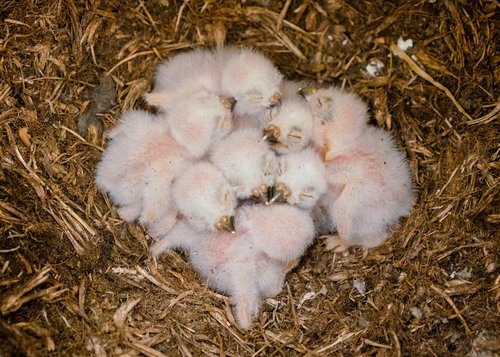
As is true on most breeding grounds, there are seasonal influences on the population dynamics of the Depot, resulting in good and bad years. Severity of weather, availability of small mammals, and ages of individual owls are such factors. Even considering difficult breeding seasons, through a well-established banding protocol David has found that there are new owls arriving to the Depot, fueling a diverse gene pool and proving that the site factors into a more holistic picture of burrowing owl populations in the West. Each year, roughly 25% of females and 15% of males on the Depot are “new” birds. There are also many returners, with the senior bird being a whopping eight years old. David considers any burrowing owl older than six years to be a “grizzled old timer.” By banding individuals on the Depot, new information has been gleaned about the personal life histories, lifetime reproductive success, and the collective contributions of this population to the species status as a whole.
David speaks of burrowing owls fondly, saying they “live short, intense, and dangerous lives at the top of the food chain. They are truly driven by nesting success, and undertake absolutely amazing, ingenious, and significant feats of ecology to advance their lives.” He also points out that they offer us an enhanced visibility into the world of owls since we can observe them more readily than other species. There are also notable benefits to burrowing owls being on the land. They control deer mice populations, virtually ridding the Depot’s troop field areas of the rodent and therefore reducing the presence of hanta virus. Without top predators like owls, trophic cascades can occur within ecosystems in which one level of the food web is suppressed, resulting in consequential trickle-down effects. Burrowing owls deserve a place within the desert ecosystem, and as a top predator they occupy a critical position within a complex and beautiful food web.
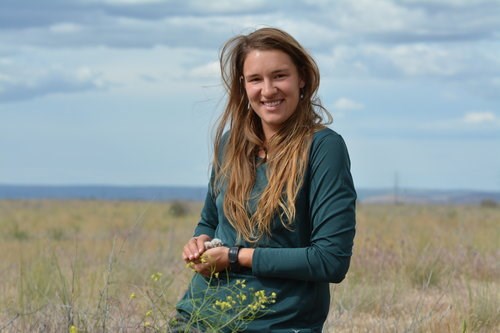
After several days involved in the project, I could see why every volunteer’s eyes sparkled while holding these birds. David has cultivated an owl oasis where not only is quality science achieved, but people are simultaneously invited to share in the delights of discovery and become a contributing character to the story of the owls. David emphasizes that his project, while focusing on ecology, also addresses the ways in which owls factor into myth and culture, what he calls a “deep-time human-owl relationship.” Burrowing owls have historically been viewed as having direct connections to the underworld for reasons that are deducible (living underground), yet there is another element to owls that pulls us in. Is it their all-knowing large eyes? Their eerie yet amusing vocals? Their nocturnal existence?
For David, the allure of the burrowing owl stems from the countless ecological insights and complexities that are discoverable by looking at the landscape as they do. For me, owls symbolize a unique predatory mindset, defined by an attuned relationship with prey that I can only dream of understanding. Owls possess this, and something else…a mysterious twist on existence that strikes a chord, perhaps due to their imperceptible presence even when they are sought.
David looked me in the eye and told me he would fight for owls until his last breath. This verbalized commitment forms a cloak of hope over the Depot, and paints an optimistic outlook for a species that may sit under the radar, so to speak, but deserves a home just like us.
David would like to express gratitude to the US Army, Oregon National Guard, and the many, many volunteers who have helped make this owl study so successful.
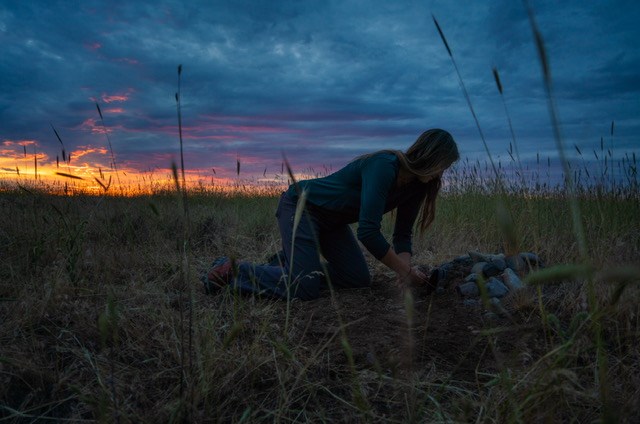
Photos compliments of the Global Owl Project.